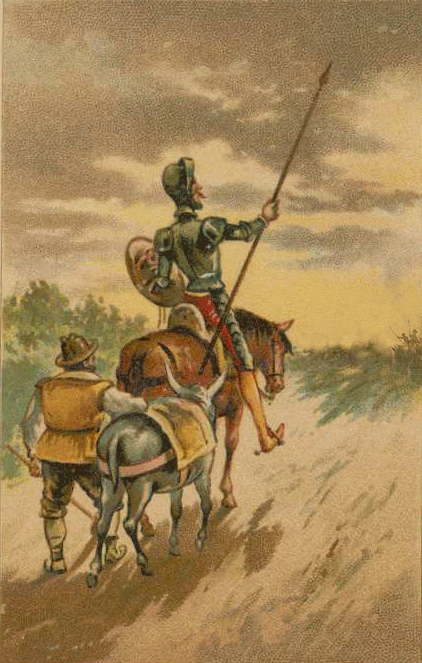- Geneseo en español
- Posts
- El Quijote: A Cultural Treasure of Spain and the World
El Quijote: A Cultural Treasure of Spain and the World
How the novel by Miguel de Cervantes shaped the Spanish language, literature, and identity

El Quijote, or Don Quixote in English, is a novel by Miguel de Cervantes, published in two parts in 1605 and 1615. It is considered the first modern novel and one of the most influential works of literature in history. The novel tells the story of an aging gentleman who, obsessed with chivalric romances, decides to become a knight-errant and embark on a series of adventures with his faithful squire, Sancho Panza.
The cultural importance of el quijote lies in its profound impact on the development of the Spanish language, the literary genre of the novel, and the representation of the Spanish identity and values. Some of the aspects that make el quijote a masterpiece of world literature are:
Its innovative use of the Spanish language, which combines different dialects, registers, and styles, creating a rich and expressive linguistic diversity. Cervantes also coined many new words and phrases that have become part of the common speech, such as quixotic, meaning impractical or idealistic.
Its original structure and narrative technique, which breaks the conventions of the chivalric romance and introduces elements of realism, satire, irony, and metafiction. The novel is composed of various episodes that are interconnected by the characters and themes, but also have their own plot and style. The novel also plays with the notions of authorship, fiction, and truth, as it includes multiple narrators, sources, and perspectives, and challenges the reader’s expectations and assumptions.
Its universal and timeless themes, such as the conflict between reality and imagination, the quest for honor and glory, the value of friendship and loyalty, the critique of social norms and institutions, and the exploration of human nature and psychology. The novel also reflects on the historical and cultural context of Spain in the 17th century, a period of political and religious turmoil, economic decline, and cultural splendor.
Its memorable and complex characters, especially the protagonist, Don Quixote, and his squire, Sancho Panza, who represent the contrast and complementarity between idealism and realism, madness and wisdom, nobility and commonness, fantasy and experience. The novel also features a gallery of secondary characters, such as Dulcinea, the imaginary lady love of Don Quixote, and the innkeeper, the priest, the barber, and the duke and duchess, who interact with the main characters and influence their fate.
Its enduring legacy and influence, which has inspired countless adaptations, interpretations, and homages in various media and languages. The novel has been translated into more than 140 languages and has been the subject of numerous studies and analyses. It has also influenced many writers and artists, such as William Shakespeare, Johann Wolfgang von Goethe, Gustave Flaubert, Fyodor Dostoyevsky, James Joyce, Jorge Luis Borges, Pablo Picasso, and Salvador Dalí, among others.
In conclusion, el quijote is a cultural treasure that transcends its time and place, and offers a universal and humanistic vision of life, literature, and art. It is a novel that invites the reader to join the adventure of Don Quixote and Sancho Panza, and to share their dreams, hopes, fears, and joys. It is a novel that celebrates the power of imagination, the beauty of language, and the dignity of the human spirit.
Questions:
El Impacto Cultural: How has “El Quijote” influenced the Spanish language and identity?
Literary Significance: In what ways did Miguel de Cervantes shape literature through “El Quijote”?
Global Influence: Why is “El Quijote” considered a cultural treasure not just in Spain, but around the world?
Spanish Word:
Novela: A literary genre that narrates a fictitious or semi-fictitious story. “El Quijote” is often regarded as one of the greatest novels ever written.
Classroom Activity:
Create a Web Page: Students can design a web page dedicated to “El Quijote,” featuring sections on its historical context, themes, characters, and its impact on Spanish culture. This activity will help students understand web design and the importance of organizing information effectively.